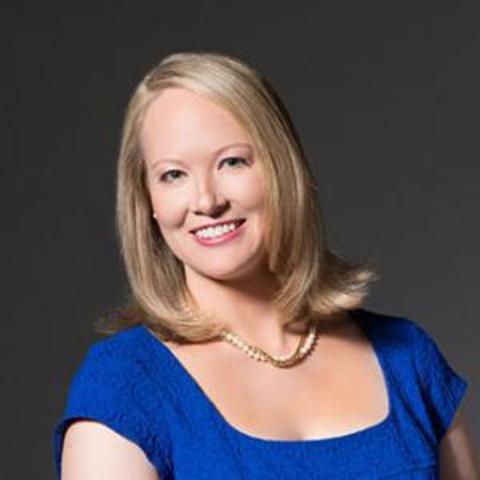Section Branding
Header Content
Georgia Took 50 Years To Back Women's Right To Vote
Hero Image
Primary Content
GPB "All Things Considered" host Rickey Bevington speaks to Tamar Hallerman, Senior Reporter with the Atlanta Journal Constitution, about Georgians' attitudes about women's suffrage in 1920.
When women gained the right to vote under the U.S. Constitution on August 26, 1920, Georgia was not on board.
State lawmakers had passionately rejected ratifying the 19th amendment.
To learn more about early 20th century Georgians' attitudes about women's suffrage, GPB All Things Considered host Rickey Bevington spoke with the AJC's Hallerman.
This conversation has been edited for clarity and conciseness
Rickey Bevington: Take us back more than a century to Georgia in the early part of the 1900s. What were the prevailing attitudes about women that were informing people's opinions about whether women should vote?
Tamar Hallerman: Georgia was very much a part of the old conservative South. Historians, or at least the ones I talked to, really believe that the prevailing attitude at the time was that women should belong in the home and not in the down and dirty world of politics. And that a way to honor women was to keep them out of the political arena. And it seemed like many women at the time, or at least white women in Georgia, believed that they had all the rights that they needed already being able to exert soft influence on their fathers and their husbands and their sons.
Bevington: The nation is only a few decades removed from the Civil War. Many Southerners are still angry about Reconstruction, still suspicious of anything coming out of the north. Why was this movement born out of the North and seen as kind of being imposed on the South?
Hallerman: The women's suffrage movement was very much an offshoot of the abolitionist movement that arose prior to the Civil War. And a lot of the the leaders of the movement, including Susan B. Anthony, were not only abolitionists themselves, but were close friends with leaders like Frederick Douglass, who, of course, was a very controversial figure down in the South. It was viewed with deep suspicion in Georgia and it was really here – and in the South more broadly – that it faced the most resistance. A lot of people saw this as sort of a poison from the northeast, a Trojan horse that was going to come down and really ruin Southern society as these white, powerful elites knew of it at the time.
Bevington: And yet the white women's suffrage movement seemed rather comfortable with actually distancing themselves [from] the African-American cause. Talk about that.
Hallerman: Exactly. When the national suffrage movement decided that they were going to seek an amendment to the Constitution, it was going to require them to win over three-quarters of U.S. states. So they began implementing a strategy known as the "Southern Strategy," where they are going to appeal to a lot of the white supremacist instincts of the political leadership in the South. So that included actively dis-inviting Frederick Douglass from the women's suffrage convention that was being held in Atlanta in 1895. That included the very much overt argument that,"Hey, guys, if you give women the right to vote, white women are going to vote with their white husbands who tend to vote Democratic. That can help counterbalance the votes from newly enfranchised Black men who might be more willing to vote Republican with Abraham Lincoln's party." So they very much appeal to that mindset. Not only that, but something that was a little more under the surface, but very obvious as they begin debating this was,"Hey, you can still use Jim Crow to disenfranchise Black women, just like you've been doing with Black men these last few decades."
Bevington: Black women took it upon themselves to advocate and work for their own causes. Tell me about the National Association of Colored Women and their work.
Hallerman: A lot of the Black women's suffrage groups that emerged at the time were centered around Black churches. The National Association of Colored Women, of course, grew up to be a much broader organization than that. By the end of World War I it grew to about 300,000 members, a giant group. Whereas a lot of the white suffrage groups were focused on getting a women's suffrage amendment to the Constitution, a lot of these organizations for Black women were far broader. They were looking to fight Jim Crow laws. They were pushing for anti-lynching legislation. And they were also looking to safeguard the 15th Amendment, which is what gave Black men the right to vote in 1870.
Bevington: It wasn't until 1970 that the Georgia legislature formally endorsed women's suffrage. And yet there was still some resistance.
Hallerman: Sure. And this came after the 1960s when there was a new wave of feminism that had taken root across the country. And at the same time, there were many activists who are beginning to discuss the possibility of a new constitutional amendment – the Equal Rights Amendment. I will note that it was a unanimous vote. It didn't even make it onto the front page of the Atlanta Journal or the Atlanta Constitution at the time. But still, the debate that we saw by two lawmakers on the floor of the Georgia House, all of it was said in jest but it kind of tips the hat at how the debate went back in 1920. And one male lawmaker said to another, "Are you a woman hater? Then why do you want to drag them down to our level?" And his colleague replies, "I only believe in equality."
Bevington: Tamar Hallerman of the Atlanta Journal Constitution thank you so much for joining me.
Hallerman: Thank you.

